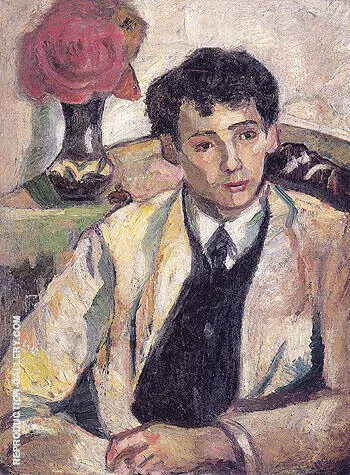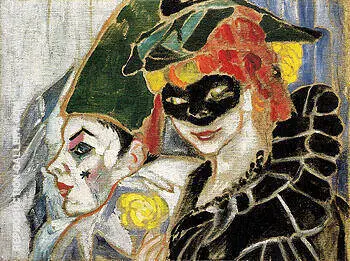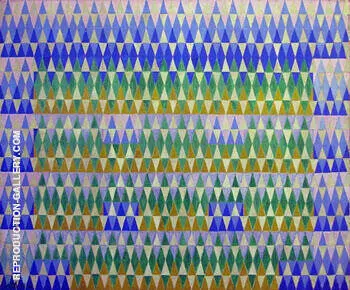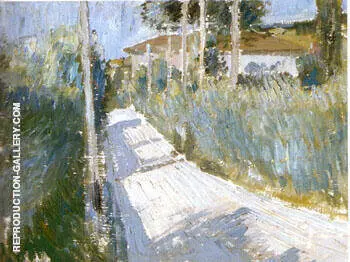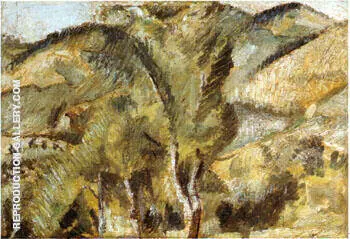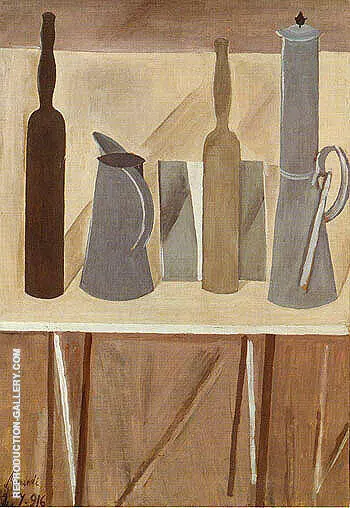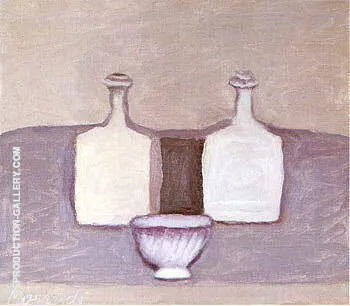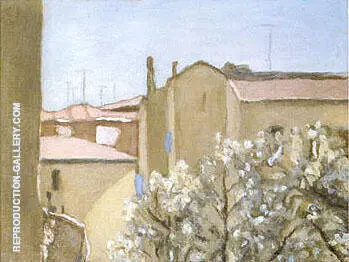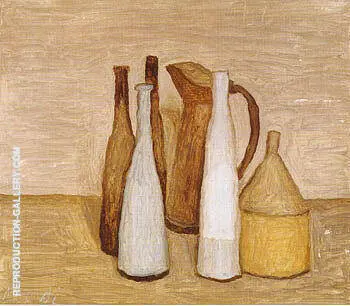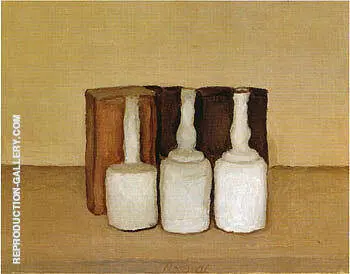Futurism Art Movement Oil Painting Reproductions
Find Futurism Art Movement Oil Painting Replicas By Futurism Artists
The Futurism Art Movement: A Brief Introduction
The Futurism art movement transformed 20th century art. Consisting of a small group of Italian artists, Futurism paintings capture the modern machine age's energy, spirit, and dynamism. However, the movement also references darker themes of violence and nationalism, leading to the carnage of the First World War.
This brief introduction explains Futurism’s defining characteristics, the most famous oil paintings, and leading artists.
What does Futurism Mean in Art?
Futurism is a 20th century art movement that began in Milan, Italy. Launched by the poet Filippo Tommaso Marinetti in 1909, it lasted until just after the bloodshed of World War I.
On 20 February 1909, Marinetti released his Manifesto of Futurism. Published on the front page of the Paris newspaper Le Figaro, it stridently criticized traditional art and culture. Marinetti felt Italians should have placed more emphasis on their history and tradition. He argued that the weight of the past oppressed young artists and society in general. Marinetti instead endeavored to “free Italy” from her “innumerable museums,” which he claimed covered the country like “countless cemeteries.”
What inspired Futurism Painters?
Instead of looking back to Greek and Roman civilizations, Futurism artists celebrated the new age of technology and machine-led industry. Putting it succinctly, Marinetti declared “a new beauty, the beauty of speed.” Marinetti conjectured that the beauty inherent in a speeding motor car was far more pleasing than the most significant Greek sculptures. In line with this celebration of “the new,” Futurism movement art also had a complex relationship with violence and patriotism. Their Futurist Manifesto glorified war, militarism, patriotism, and “beautiful ideas worth dying for."
Nonetheless, the Futurism movement wasn’t expressly political until 1913. After this point, Marinetti campaigned against the Austro-Hungarian Empire during World War I. The outbreak of the war essentially ended the Futurists artists' output, as many Italian artists signed up for active combat after 1915.
What makes painting Futurism?
Stylistically, there are no set rules for a futurist painting. Despite this, Futurist artists emphasized youth, dynamism, speed, technology, and machinery such as cars and airplanes. This group of 20th century artists was all committed to a “universal dynamism.” For the Futurists, objects weren’t separate from people or their surroundings. Instead, everything, including buses, houses, cars, and people, blended and melded into one satisfying whole. As a result, they often depicted modern urban scenes featuring industrial labor contrasting with the “natural” world.
Although the movement was primarily Italian, Futurist artists emerged throughout Europe. For instance, parallel movements emerged in Russia, with a separate group of Russian Futurists, and in England, with the similarly inspired Vorticist movement. Futurism also influenced many movements appearing shortly after, such as Art Deco paintings, Constructivism, the Dada art movement, and Surrealism. While these artistic groups were each completely different in their objectives and activities, they all opposed “traditional” attitudes to art in one way or another.
What are the characteristics of Futurism Art?
Futurism paintings use elements of Neo-Impressionism and Cubism. By combining these two pioneering art movements, Futurist artists created compositions with a sense of dynamism, energy, and movement. They took the intense, contrasting coloring of Neo-Impressionism and combined it with the geometric forms and analytical rigor of Cubism.
Given the importance of these two inspirations, it is worth exploring their critical characteristics in turn.
Neo-Impressionism
Neo-impressionism is the title applied to the Post-impressionism painting by famous artists like Paul Signac and Georges Seurat. Inspired by scientific optical theories, they painted with adjacent dabs of primary color to create the impression of moving light. Instead of mixing colors on an artist’s palette, primary colors appear directly on the canvas. This technique was known as “divisionism.” Placed in small dabs and blocks, colors mix in the viewer's eye. It was an interactive, dynamic process that fascinated Futurist artists.
Cubism
Cubism is the second primary inspiration for Futurist Art. The Cubist movement commenced just before Futurism. Georges Braque and Pablo Picasso pioneered the Cubist movement. These famous artists presented multiple different views of people and objects. Depicted in the same pictorial space resulted in heavily abstracted and fragmented images. Gino Severini was the first Futurist artist to discover Cubism after visiting Paris in 1911. After that, Futurist art became very similar to Cubist oil painting.
What are three facts about The Futurism Art Movement?
Here are three facts about the Futurism art movement:
- First, the Futurists published many manifestos, including writing on architecture, music, gender, fashion, religion, and cooking. However, their founding manifesto did not contain a specific artistic program and emerged later in the Technical Manifesto of Futurist Painting (published in 1910).
- Vorticism (founded by Wyndham Lewis) was the British equivalent of the futurist movement. Nonetheless, the Vorticists were deeply hostile to the Futurist art movement. Despite significant aesthetic similarities, the two artistic groups remained fierce rivals.
- Futurism ended around 1918. After the brutality of the First World War, many artists rejected utopian Futurist ideas. Many artists supported traditional Neo-Classical approaches, which became known as the “return to order.”
Who were the foremost Futurist Artists?
Giacomo Balla, Umberto Boccioni, and Gino Severini were the leading artists associated with the Futurism movement art. Filippo Tommaso Marinetti was a novelist who also created stunning Futurist oil paintings. The group also inspired work by artists from multiple genres, such as Alice Bailly.
The most famous Futurism artist and their most iconic oil paintings are:
Giacomo Balla 1871-1958
Giacomo Balla’s Dynamism of a Dog on a Leash exemplifies the Futurist’s insistence that the world is constantly moving. The painting illustrates this idea with a black dog whose tail and leash blur into a monochrome whirlwind of movement.
Indeed, the Technical Manifesto of Futurist Painting stated that moving objects “constantly multiply themselves” like “rapid vibrations.” In other Giacomo Balla oil paintings created in 1913 and 1914, the artist took this principle to new heights. In paintings such as Line of Speed and Mercury Passing Before the Sun, dynamic lines, color, and shape merge to create a pulsating abstract whole.
Alice Bailly 1872-1938
As a Swiss avant-garde painter, Alice Bailly experimented with multiple art movements and styles, including Fauvism, Cubism, Dada, and Futurism. She immersed herself in the Futurism art movement just before the outbreak of World War One and maintained a Futurist aesthetic in many later works.
Bailly's painting includes the oil painting Geneva Harbor. While this oil painting may initially appear like a straightforward landscape, it invites closer study. The individual swans, sky, boats, and waves break apart when observed in detail. Then, they repeat and merge in a Futurist celebration of color and shape.
Filippo Tommaso Marinetti 1876-1944
As the founding Futurist artist, Filippo Tommaso Marinetti authored the first Futurist Manifesto (published in 1909). In this controversial piece of art theory, Marinetti declared that art could be “nothing but violence, cruelty, and injustice.”
As a movement, Futurism had elements of both anarchism and fascism. Indeed, Marinetti later became a staunch supporter of Benito Mussolini. In works such as Skyscrapers and Tunnels, Fortunato Depero 1930 celebration of the modern machine age is evident. Skyscrapers dynamically rise into the sky while several clock-like suns loom overhead.
Gino Severini 1883-1966
Futurism paintings frequently borrowed from Cubism, particularly the work of Gino Severini.
Despite this Cubist influence, the Futurism art movement moved away from the quieter, more static compositions of George Braque and Juan Gris. Instead, as one art critic described Severini’s work, “The eye is fixed, and the object moves.”
Nonetheless, the Cubist language of overlapping and fragmented planes remained.
Severini's earlier paintings, such as Sea Dancer (Mare Ballerina), are especially evident. Here, classic Cubist shapes of triangles, cylinders, and arcs pulsate with distinctly Futurist energy.
Umberto Boccioni 1882-1916
Influenced by the philosophical ideas of Henri Bergson, Boccioni’s art was truly unique. He defined intuition as the “simple experience of sympathy,” allowing artists to grasp the “inner being of an object,” as Umberto Boccioni’s artwork characterized.
In addition to these philosophical concerns, his art frequently celebrates human achievement and physique, as best demonstrated in paintings such as Dynamism of a Soccer Player and Dynamism of a Cyclist (1913).
Futurism Paintings: Oil Painting Reproductions
If you love the energy and dynamism of the Futurism art movement, explore our extensive collection of oil paintings for sale.
Discover oil paintings for sale, from modern art replicas to famous Renaissance oil paintings. Reproduction oil paintings are available in many sizes, and we specialize in oversized wall art. flair to any home or office.
Cannot Find What You Are Looking For?
Reproduction Gallery Information
Customer Service
(Send Us A Message)
Tel: (302) 513 3464

